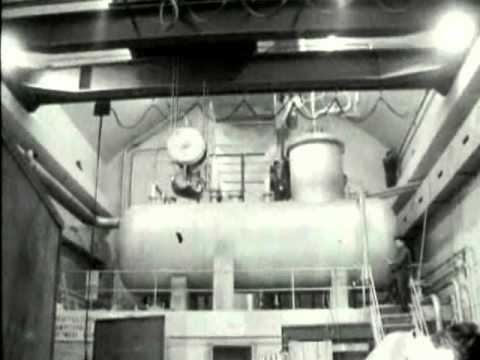Status decommissioned Operator EOS Holding Decommission date 3 March 1969 | Reactor type PHWR Construction began 1 April 1962 | |
 | ||
Owner(s) Nationale Gesellschaft zur Förderung der industriellen Atomtechnik Similar Nuclear power in Switzerland, Pressurized heavy‑water reactor, Enrico Fermi Nuclear, Chapelcross nuclear power sta, Santa Susana Field Lab | ||
The Lucens reactor was a 6 MW experimental nuclear power reactor built next to Lucens, Vaud, Switzerland. After its connection to the electrical grid on 29 January 1968, the reactor only operated for a few months before it suffered a loss-of-coolant accident on 21 January 1969, leading to a partial core meltdown and massive radioactive contamination of the cavern.
Contents
- Map of DC3A9pC3B4t et abri de biens culturels Route de Moudon 1522 Lucens Switzerland
- Description
- Nuclear accident
- References
Map of D%C3%A9p%C3%B4t et abri de biens culturels, Route de Moudon, 1522 Lucens, Switzerland
Description
In 1962 the construction of a Swiss-designed pilot nuclear power plant began. The heavy-water moderated, carbon dioxide gas-cooled reactor was built in an underground cavern and produced 30 MW of heat (which was used to generate 8.3 MW of electricity). It became critical 29 December 1966. It was fueled by 0.96% enriched uranium alloyed with chromium cased in magnesium alloy (magnesium with 0.6% zirconium) inserted into a graphite matrix. Carbon dioxide gas was pumped into the top of the channels at 6.28 MPa and 223 °C and exited the channels at a pressure of 5.79 MPa and at a temperature of 378 °C.
Nuclear accident
It was intended to operate until the end of 1969, but during a startup on 21 January 1969, it suffered a loss-of-coolant accident, leading to a partial core meltdown and massive radioactive contamination of the cavern, which was then sealed. The accident was rated 4–5 on the International Nuclear Event Scale introduced in 1990 by the International Atomic Energy Agency.
The accident was caused by water condensation forming on some of the magnesium alloy fuel element components during shutdown and corroding them. The corrosion products from this accumulated in some of the fuel channels. One of the 73 vertical fuel channels was sufficiently blocked by it to impede the flow of carbon dioxide coolant so that the magnesium alloy cladding melted and further blocked the channel. The increase in temperature and exposure of the uranium metal fuel to the coolant eventually caused the fuel to catch fire in the carbon dioxide coolant atmosphere. The pressure tube surrounding the fuel channel split because of overheating and bowing of the burning fuel assembly, and the carbon dioxide coolant leaked out of the reactor.
No irradiation of workers or the population occurred, though the cavern containing the reactor was seriously contaminated. The cavern was decontaminated and the reactor dismantled over the next few years. The plant was totally decommissioned in 1988 and the last radioactive waste was removed in 2003.
